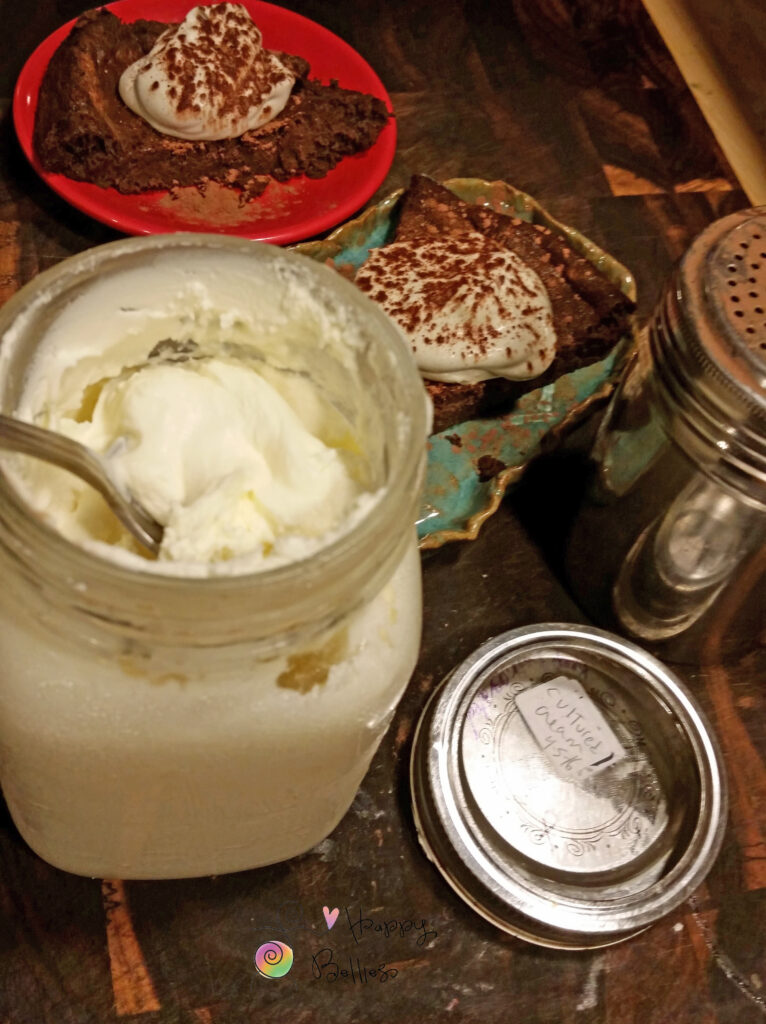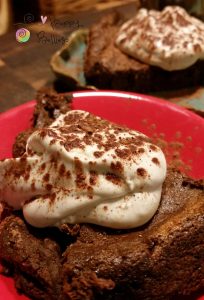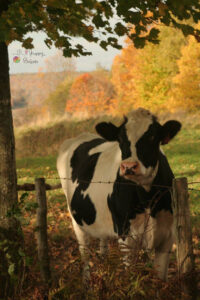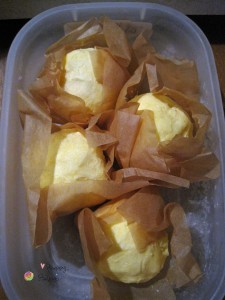Cultured Creme Fraiche
Tara Carpenter, NC.
Nutrition Consultant specialized in helping people regain natural microbiome after yeast, bacterial, and viral infections.

Originally published on June 7, 2017.
Cultured cream is just a fancy name for probiotic-rich sour cream that is traditionally called crème fraiche. Very simple to make. All you need is a glass jar, cream, and culture starter* to break down protein in milk called casein) and to convert sugar in milk called lactose into lactic acid.
The end result is an easy-to-digest dairy with one of the best kinds of fat for the brain, especially children or pregnant women. Many lactose or casein intolerant people who can’t normally eat heavy cream or dairy without skin breakouts or stomach upset, etc. find they can tolerate creme fraiche because this is a pre-digested food with little work for the body to do other than assimilate good fats 🙂
Cultured cream contains live and beneficial strains of probiotics to keep the inner ecosystem (living environment in your gut) healthy and balanced.
I could not eat dairy for 10 years. Yet, once I deeply cleansed my body and healed my digestion with Body Ecology Diet (B.E.D.) and started culturing dairy as I do in this recipe, I could! Regardless, best to ease in with a small amount and increase gradually over time as you watch body for signs and symptoms. I recommend enzymes like this one to help as needed.

Creme Fraiche
Ingredients
1 packet of culture starter* (or 2 tablespoons cultured buttermilk)
1 pint organic, heavy whipping cream** (preferably raw, pasture-raised)
1 pint-sized glass jar with tight-fitting lid (sterilize properly)
Instruction
- Place room-temperature cream into jar.
- Stir in a packet of starter.
- Sit 12-24 hours at 72-75 degrees Fahrenheit until slightly thick. Important to culture cream at 72-75 degrees. This Incubator Kit keeps temperatures constant or use a seed-mat or put jar on top of fridge or near heating vent. Keep temperature constant with a room thermometer. If temperature drops below 69 degrees cream may become stringy and slimy. If temperature gets above 75 degrees may culture too fast and separate or turn sour.
- Shake well.
- Transfer to refrigerator to firm up, keeps for several months.
Tips & Tricks
- Sweeten with green stevia or BE sweetener for a safe sweetener for diabetics and those healing yeast, bacterial, or viral overgrowth.
- My kids love when I add in strawberry or almond extract (sugar/alcohol-free).
- In summer, put a bowl full in freezer, so yummy 🙂
- Add scoop to sour fruit (green apple, pomegranate), sprouted seeds, and super spirulina for a nourishing “breakfast bowl”.
- Churn into ice cream or cultured butter.
- Fold into dressing or dips.
- Dollop on soup or baked red-skin potato with chives.
- Add to sauce as a cream thickener (won’t curdle/separate).
- Ideal for anyone on a gut healing program like B.E.D.
- This recipe combines well with everything, even fruit.

*This culture starter contains probiotics (i.e., Lb. Plantarum) that are some of heartiest strains to put in body. Most probiotics get destroyed by antibiotics, fluoride, stomach acid, chlorinated water, etc. before reaching small intestine, yet probiotics in starter are strong and survive to keep gut full of good flora.
**Raw cream is best. The protein in pasteurized cream are denatured (protein’s shape changes when exposed to external stress) in a fraction of a second due to being exposed to high heat of 260 degree F. heat that pasteurization entails. This extreme heat damages sensitive proteins in cream and they can become an allergen source. This is #1 reason why people react to pasteurized dairy. Even if you use starter culture to culture pasteurized cream back to life, the damaged proteins may still cause allergic reactions in sensitive individuals. However, when you use raw cream that wasn’t heated above 118 degrees (point when enzymes get destroyed) you have a living food with natural integrity preserved. Source raw cream from local farmer with methods you know and trust.

Cultured Butter
References
Gates, D. (2010). The Body Ecology Diet. Bogart, GA: B.E.D. Publications
Disclaimer: This post may contain affiliate links for products I believe in and use on a regular basis. See more here. All content is for general information only, primarily educational in nature, and should not be treated as a substitute for the medical advice of your primary health-care practitioner that you, the reader, may require for any cause whatsoever, now or in future. Consult your primary practitioner regarding any health problem(s) you have and keep them informed to the opinions, ideas, and advice on this site that you find useful. Full disclaimer here. Please email tara@happybellies.net for any questions or concerns that you have.
May all bellies be happy!

